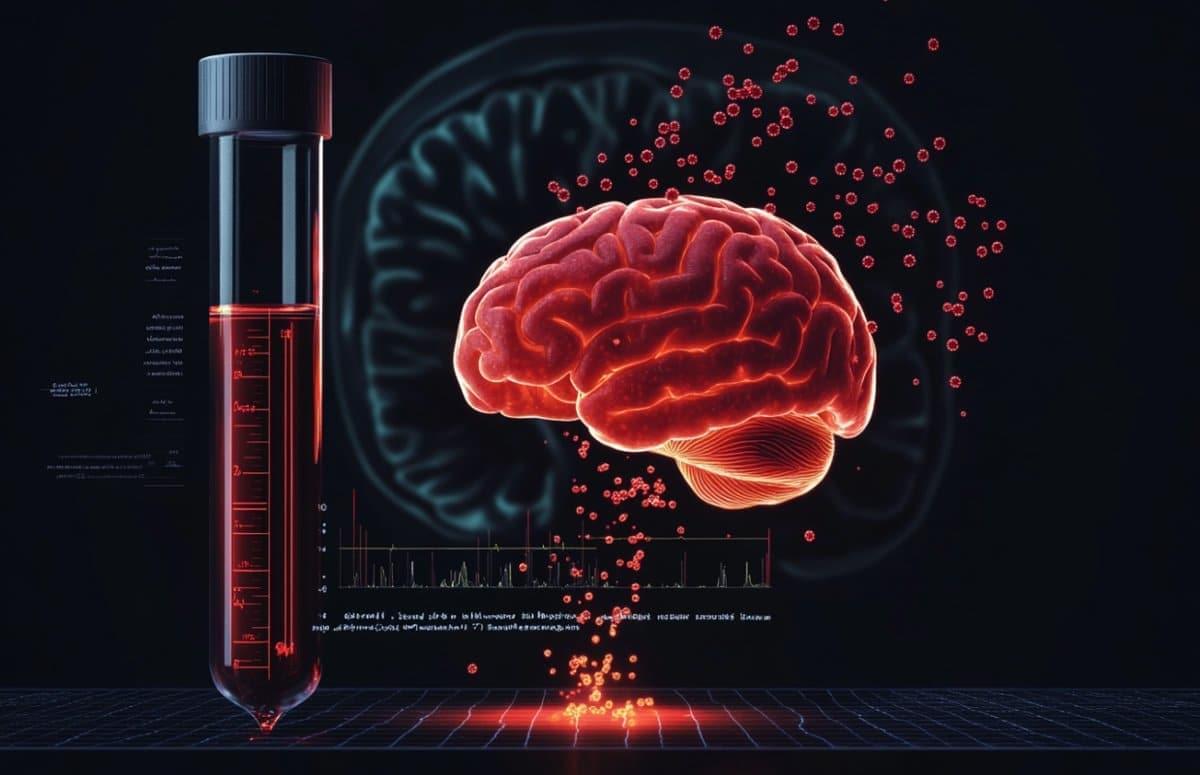Scientists have observed “quantum rain” for the first time—quantum droplets breaking up just like water in a storm! This discovery bridges classical fluid dy…
Get the latest international news and world events from around the world.
Neural Dust explained | Neuralink — DJ Seo and Lex Fridman
Lex Fridman Podcast full episode: https://www.youtube.com/watch?v=Kbk9BiPhm7o.
Please support this podcast by checking out our sponsors:
- Cloaked: https://cloaked.com/lex and use code LexPod to get 25% off.
- MasterClass: https://masterclass.com/lexpod to get 15% off.
- Notion: https://notion.com/lex.
- LMNT: https://drinkLMNT.com/lex to get free sample pack.
- Motific: https://motific.ai.
- BetterHelp: https://betterhelp.com/lex to get 10% off.
GUEST BIO:
Elon Musk is CEO of Neuralink, SpaceX, Tesla, xAI, and CTO of X. DJ Seo is COO & President of Neuralink. Matthew MacDougall is Head Neurosurgeon at Neuralink. Bliss Chapman is Brain Interface Software Lead at Neuralink. Noland Arbaugh is the first human to have a Neuralink device implanted in his brain.
PODCAST INFO:
Podcast website: https://lexfridman.com/podcast.
Apple Podcasts: https://apple.co/2lwqZIr.
Spotify: https://spoti.fi/2nEwCF8
RSS: https://lexfridman.com/feed/podcast/
Full episodes playlist: https://www.youtube.com/playlist?list=PLrAXtmErZgOdP_8GztsuKi9nrraNbKKp4
Clips playlist: https://www.youtube.com/playlist?list=PLrAXtmErZgOeciFP3CBCIEElOJeitOr41
SOCIAL:
- Twitter: https://twitter.com/lexfridman.
- LinkedIn: https://www.linkedin.com/in/lexfridman.
- Facebook: https://www.facebook.com/lexfridman.
- Instagram: https://www.instagram.com/lexfridman.
- Medium: https://medium.com/@lexfridman.
- Reddit: https://reddit.com/r/lexfridman.
- Support on Patreon: https://www.patreon.com/lexfridman
Can a Neuralink device be upgraded? | DJ Seo and Lex Fridman
Lex Fridman Podcast full episode: https://www.youtube.com/watch?v=Kbk9BiPhm7o.
Please support this podcast by checking out our sponsors:
- Cloaked: https://cloaked.com/lex and use code LexPod to get 25% off.
- MasterClass: https://masterclass.com/lexpod to get 15% off.
- Notion: https://notion.com/lex.
- LMNT: https://drinkLMNT.com/lex to get free sample pack.
- Motific: https://motific.ai.
- BetterHelp: https://betterhelp.com/lex to get 10% off.
GUEST BIO:
Elon Musk is CEO of Neuralink, SpaceX, Tesla, xAI, and CTO of X. DJ Seo is COO & President of Neuralink. Matthew MacDougall is Head Neurosurgeon at Neuralink. Bliss Chapman is Brain Interface Software Lead at Neuralink. Noland Arbaugh is the first human to have a Neuralink device implanted in his brain.
PODCAST INFO:
Podcast website: https://lexfridman.com/podcast.
Apple Podcasts: https://apple.co/2lwqZIr.
Spotify: https://spoti.fi/2nEwCF8
RSS: https://lexfridman.com/feed/podcast/
Full episodes playlist: https://www.youtube.com/playlist?list=PLrAXtmErZgOdP_8GztsuKi9nrraNbKKp4
Clips playlist: https://www.youtube.com/playlist?list=PLrAXtmErZgOeciFP3CBCIEElOJeitOr41
SOCIAL:
- Twitter: https://twitter.com/lexfridman.
- LinkedIn: https://www.linkedin.com/in/lexfridman.
- Facebook: https://www.facebook.com/lexfridman.
- Instagram: https://www.instagram.com/lexfridman.
- Medium: https://medium.com/@lexfridman.
- Reddit: https://reddit.com/r/lexfridman.
- Support on Patreon: https://www.patreon.com/lexfridman
History of Brain-Computer Interfaces | Neuralink — DJ Seo and Lex Fridman
Lex Fridman Podcast full episode: https://www.youtube.com/watch?v=Kbk9BiPhm7o.
Please support this podcast by checking out our sponsors:
- Cloaked: https://cloaked.com/lex and use code LexPod to get 25% off.
- MasterClass: https://masterclass.com/lexpod to get 15% off.
- Notion: https://notion.com/lex.
- LMNT: https://drinkLMNT.com/lex to get free sample pack.
- Motific: https://motific.ai.
- BetterHelp: https://betterhelp.com/lex to get 10% off.
GUEST BIO:
Elon Musk is CEO of Neuralink, SpaceX, Tesla, xAI, and CTO of X. DJ Seo is COO & President of Neuralink. Matthew MacDougall is Head Neurosurgeon at Neuralink. Bliss Chapman is Brain Interface Software Lead at Neuralink. Noland Arbaugh is the first human to have a Neuralink device implanted in his brain.
PODCAST INFO:
Podcast website: https://lexfridman.com/podcast.
Apple Podcasts: https://apple.co/2lwqZIr.
Spotify: https://spoti.fi/2nEwCF8
RSS: https://lexfridman.com/feed/podcast/
Full episodes playlist: https://www.youtube.com/playlist?list=PLrAXtmErZgOdP_8GztsuKi9nrraNbKKp4
Clips playlist: https://www.youtube.com/playlist?list=PLrAXtmErZgOeciFP3CBCIEElOJeitOr41
SOCIAL:
- Twitter: https://twitter.com/lexfridman.
- LinkedIn: https://www.linkedin.com/in/lexfridman.
- Facebook: https://www.facebook.com/lexfridman.
- Instagram: https://www.instagram.com/lexfridman.
- Medium: https://medium.com/@lexfridman.
- Reddit: https://reddit.com/r/lexfridman.
- Support on Patreon: https://www.patreon.com/lexfridman
Brain-Computer Interface: No Open Brain Surgery Required 🧠
Synchron has developed a Brain-Computer Interface that uses pre-existing technologies such as the stent and catheter to allow insertion into the brain without the need for open brain surgery.
Read the CNET article for more info:
You Might Not Need Open Brain Surgery to Get Mind Control https://cnet.co/3sZ7k67
0:00 Intro.
0:25 History of Brain Chip Implants.
0:44 About Synchron.
0:54 How Synchron implants the interface.
1:55 How brain patterns transmit signals.
2:50 Risks and Concerns.
3:50 Patients and Clinical Testing.
4:25 Brain Health Monitoring.
5:04 Synchron Switch Price.
Never miss a deal again! See CNET’s browser extension 👉 https://bit.ly/3lO7sOU
Check out CNET’s Amazon Storefront: https://www.amazon.com/shop/cnet?tag=lifeboatfound-20.
Follow us on TikTok: / cnetdotcom.
Follow us on Instagram: / cnet.
Follow us on Twitter: / cnet.
Like us on Facebook: / cnet.
#WhatTheFuture #Synchron #BCI
Augmenting Your Brain with AI Chips — Crazy or Futuristic?
Improving the human brain with the help of implanted chips and AI: Elon Musk’s startup Neuralink is among the companies developing this tech. Initial tests show it could be a game changer for people with disabilities.
#technology #braincomputerinterface #bci #australia #medicine #optimization #elonmusk #neuralink #stentrode #brain #computer #dishbrain.
▸ subscribe to our channel: https://goo.gl/UupwgM


The case for open decentralized beneficial general intelligence, with Ben Goertzel
We live at a time when humanity has never experienced such a rapid pace of change. We’re in the midst of unprecedented technological change, cultural change, political change, and philosophical change.
Some observers predict that the pace of change will slow down, but others anticipate that it will in fact increase — largely due to artificial intelligence leaping forward in capability, to the point where it exceeds human cognitive capabilities in every dimension.
How credible is such a possibility? How should humanity prepare for it? What values should guide us in our reactions and proactions to various new opportunities and potential threats that seem to be emerging almost daily?
The guest in this London Futurists webinar, Ben Goertzel, has arguably thought longer, harder, more creatively, and more boldly, about these questions, than anyone else on the planet. But he’s not just a thinker; Ben is very much also a doer — an organiser, an entrepreneur, an architect, an engineer, and a leader of too many initiatives to mention them all individually.
But let’s briefly highlight:
• Ben’s role as the long-time champion of the concept of AGI, artificial general intelligence;
• his role as the founder and leader of SingularityNET, with its mission to create a decentralized, democratic, inclusive and beneficial AGI;
• his leadership roles at Humanity+, the international transhumanist organisation, where he has served since 2008 as either Vice Chair or Chair;
• and his commitment to the writing and publication of mind-expanding ideas, such as his 2010 book \.
